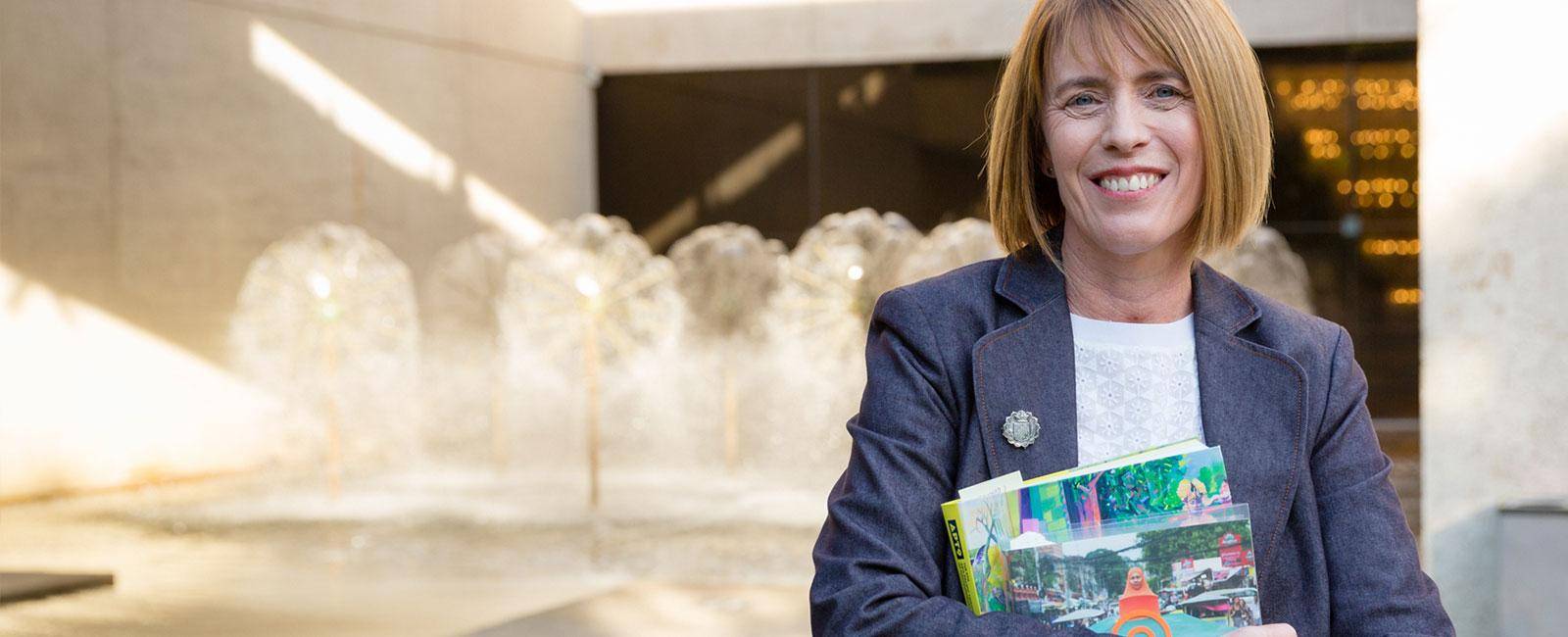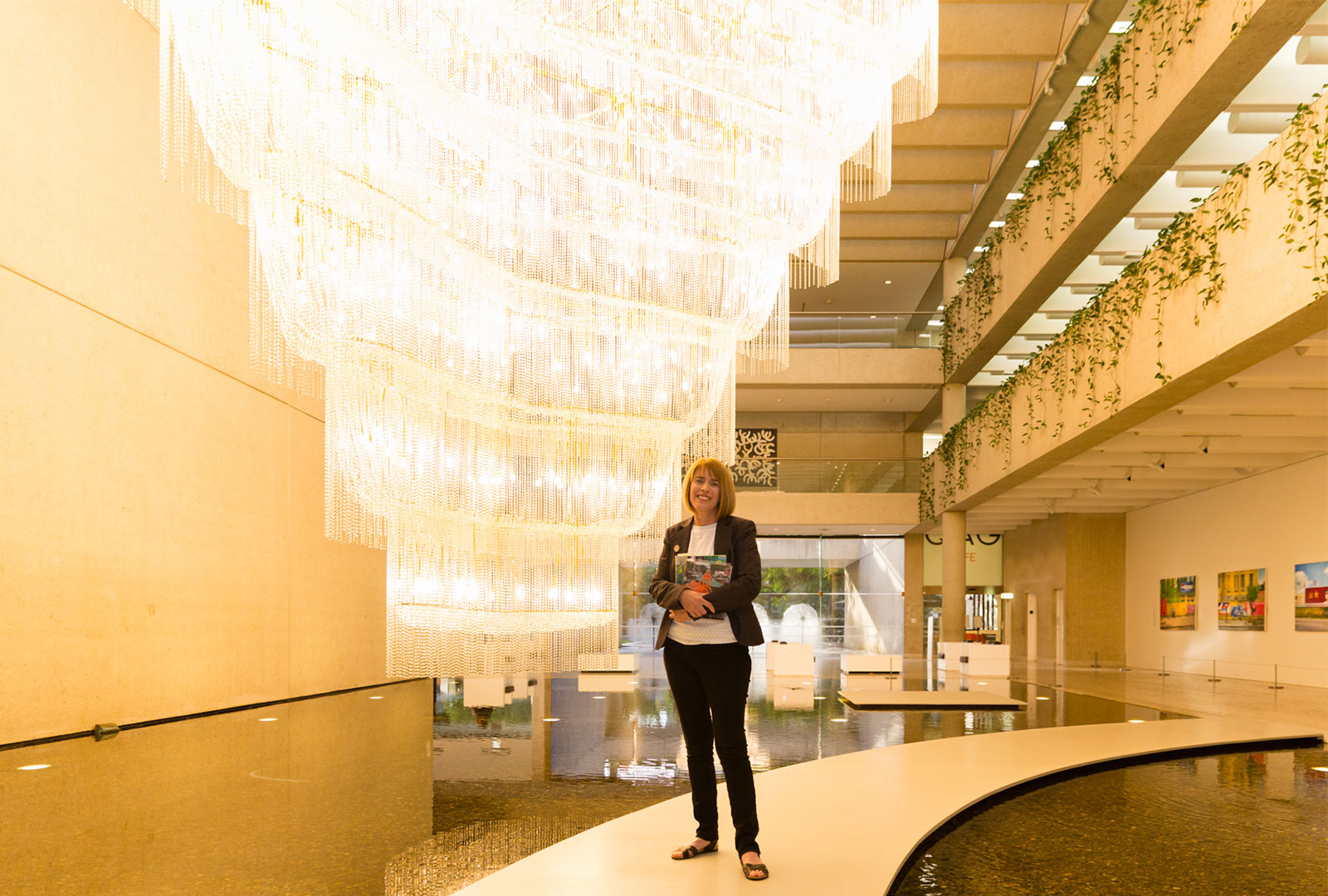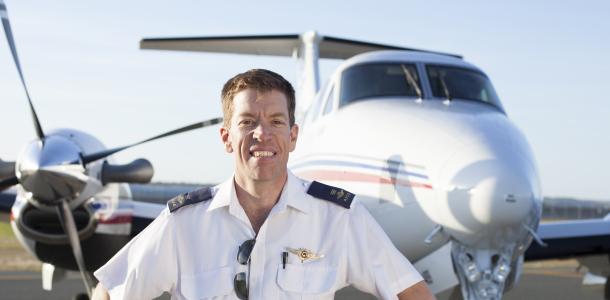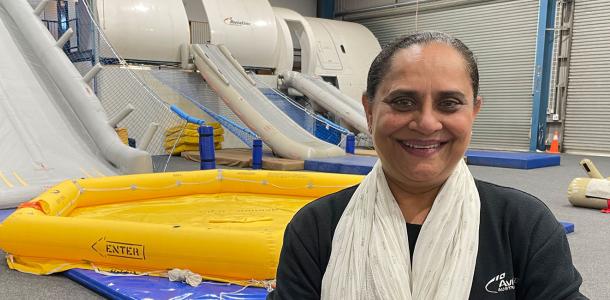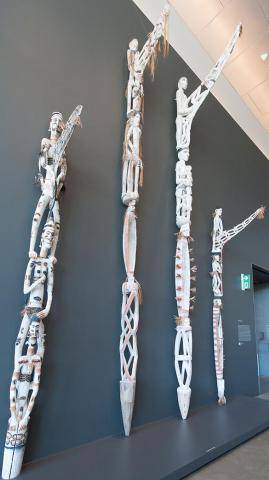
Brisbane, Queensland’s Capital, is known for its youthful zeal, enviable outdoor lifestyle and 280 days of glorious sun a year. But there is so much more to Brisbane when it comes to explaining its innate ability to attract interstate and international visitors.
Brisbane’s thriving arts and cultural scene is one of its biggest drawcards, with world-class theatre, art galleries, dance and music, film and theatre, as well as a host of museums and libraries. The Queensland Art Gallery and Gallery of Modern Art (QAGOMA) is undeniably one of the brightest jewels in Brisbane’s visual arts crown.
Tiffany Noyce is a Senior Registrar and has worked at QAGOMA for 26 years. A self-described sentimentalist, she started out as an intern and has proudly worked on every Asia Pacific Triennial of Contemporary Art (APT) since, the gallery’s flagship contemporary art series. Tiffany works within the Registration Exhibitions Team, a team of four, and together they manage the registration exhibition aspects of all QAGOMA’s exhibitions. This incorporates the legal and physical care of objects that are in the permanent collection as well as those in QAGOMA’s temporary care.
In short, Tiffany plays a crucial role in allowing the gallery’s visitors to see the world from a new and cross-cultural perspective here in Brisbane, and the pride and passion she has for her role is palpable.
“We live in this amazing world where people, institutions, and countries around the world are so generous in sharing their cultural resources, and this is where our role comes into play."
"Once our curatorial team has selected works for an exhibition, we facilitate all arrangements from that point on for them to come in. We work with the lender of the works to undertake loan formalities. So we have an agreement in place that documents what we are borrowing; for what purpose we are borrowing the objects and under what loan conditions the lender agrees to lend the objects. Our team then coordinate the insurance, bespoke packing, export/ import and associated transport logistics for the objects.”
Sourcing and arranging the travel logistics of artworks from all over the globe is no easy task. It requires wearing a cloak of secrecy, a MacGyver-esque ability to think laterally while working under pressure, solid relationships across the logistics supply chain, and most importantly, an appreciation and respect for the artists and works that you are legally taking guardianship of. Tiffany has all of this in spades.
She has successfully managed the transportation of hundreds of works, from more established art shippers in the USA and UK to works from remote communities in West Papua and India, and everything is approached with a bespoke solution. In an APT year, her team would move around 600 works in or out of the gallery.
Tiffany will assess the object and make decisions based on what it is made of, its fragility, and then work with local communities to see what they can source. She is a big believer that there is always a solution and is mindful of not placing the expectations that come from Australia’s fortune and abundance on those located within rural and remote parts of the world. More often than not, this means Tiffany invests herself fully, with the proverbial blood sweat and tears going alongside months of working through ideas to achieve safe transportation.
“We were moving these large Bisj poles that were around 6 metres long from an Asmat community in West Papua. We used the same principles we would use for sculptures in our own collection, which would be to use a cradle system to support them, and part of that required looking for something to pad them within the cradle system," Tiffany explained.
“We had already identified that they had access to timber to build the crates because we could see from photos that we had received that their houses were made from timber. The artists’ representative told me we could get pillows from the local market, and I said ‘yes, that is fantastic!' and in my mind, I thought, ‘pillows, soft, Dacron…’"
"The reality in that community was that the pillows were hot-pink, bright yellow, and were filled with sago leaf. In that instance, we had to come up with another solution because it was a wet environment and we had to be really mindful that we weren’t transferring colour that could potentially run from the pillows onto the object.”
Arranging the logistics of moving art from its country of origin is only the first part of the journey. A role like Tiffany’s means that she is at Brisbane Airport a lot. So much so that the staff on airport know her face and stand ready to deliver the same level of professionalism and care that Tiffany is known for whenever she is on site.
She works directly with the airlines to arrange cargo bookings and monitoring shipments as they come through trans-shipment points but spends most of her time in the cargo warehouse overseeing the unloading, palletising and safe handling of crates.
Sometimes, if an extremely fragile and valuable piece is coming in, Tiffany will don the hi-vis and head out on the apron to oversee unloading from the cargo hold of the plane. She could share millions of stories of the things she has seen in the cargo hold throughout her career, with pieces destined for exhibition having travelled on flights with racehorses, rock bands, and even a Komodo Dragon.
“I have to say the airport is one of my favourite places to go, because they are just such an amazingly professional team. In a sense, it is one piece of the puzzle of moving art around the globe, but without that great care, professionalism, and support that we receive out there, we can’t meet the conditions that enable us to bring amazing cultural pieces to Brisbane, and there would certainly be some institutions and private individuals who wouldn’t lend their works to us… I’m really fortunate to work with them because it makes my job easier.”
Once a piece of art has been transported into Brisbane, the vitally important biosecurity screening process must take place before the piece can be exhibited. As Tiffany rightly points out, most things in art have some sort of organic material in them and this requires them to be subject to a mandatory inspection by biosecurity officers.
There is an extraordinary level of respect between the team at QAGOMA and biosecurity officials, with the Department of Agriculture allowing the Gallery, under an Approved Arrangement, to undertake required inspections at the Gallery; with any required treatments being undertaken as per quarantine directions.
“On occasion, we do have inspections out at the airport in the cargo areas, but we are a quarantine-approved premise so we can bring our shipments here and don’t have to have them inspected at the airport. There might be a shipment where we ourselves make the decision to inspect it out there because it may have come from an area where we think it is more high-risk. But we have our own processes here too. We have an integrated pest management system for every single object that comes into the gallery – the internationally sourced artworks as well as Australian.”
QAGOMA has its own reefer on site (think of a giant container freezer), which allows materials that can withstand being frozen a place to be stored in minus-thirty-degree temperatures. The art pieces stay in there for a week, and the extreme cold ensures life is not viable for any lifeform.
The team also uses a ‘low oxygen’ method, where a custom-made bag that oxygen cannot penetrate through is used to cover the art piece. The bag is flushed with nitrogen to get the oxygen out, sealed, and left to sit for around six weeks depending on the size of the object. Again, the overriding idea is to ensure life is not viable for any lifeform.
After conducting biosecurity processes, the process of getting the art pieces ready for exhibition begins. Tiffany and the registration exhibitions team work closely with the curatorial team, the conservation team, the exhibitions design team. They have detailed discussions about every single work to determine exactly what is needed to display the work and how long it will take to source and/or build the supporting display infrastructure required.
Part of Tiffany’s role once the artworks arrive at the gallery is to unpack the works, document the unpacking process, take photos of the objects to allow the seamless repacking of the objects and ensure they return in the same way at the end, and then hand over to the conservation team to assess the condition of all of the objects and document it accordingly.
“For us it is a privilege to take care of these cultural items. It is incredibly satisfying and rewarding to bring such beautiful things across the world and present them here for exhibition. We get a lot of satisfaction out of knowing that we’ve cared for these objects so that they have longevity, and they can be here for future generations.”
The pride and satisfaction that Tiffany and her team feel within their roles is perfectly exuded in all of the exhibitions that are brought to life at the Queensland Art Gallery and Gallery of Modern Art, whether it is ‘The Asia Pacific Triennial of Contemporary Art’, ‘European Masterpieces from The Metropolitan Museum of Art, New York’, or QAGOMA’s permanent art collection. The works have been carefully and meticulously packaged, analysed, screened, transported, and appreciated. For millions of visitors that come to Brisbane and enjoy the compelling experiences that QAGOMA has to offer, they have Tiffany’s reputation in the global art community to thank for the calibre of works they get to experience.
And whether she realises it or not, the sentimental side of Tiffany beautifully illustrates the way in which she is perfectly suited to putting Brisbane on the cultural map.
“A few years ago, I went to New York with my family. I walked into a prominent museum there, and I saw something that I had transported and cared for before… I sat there and I thought, ‘it’s kind of nice to see you again’.
“That’s the thing about APT. You get to know the people that you are in contact with, and that’s really lovely. There was a shipment that I was organising of a painting from Nepal and the terrible earthquake happened at the time in Nepal. I wrote to him and I said that I hope you are okay. There was a delay, understandably, until he wrote back, and he said, ‘I’m okay’. He came up for the opening of the exhibition and he said to me, ‘Tiffany, when the earthquake happened, I hopped on my scooter and I raced through the streets helping people - pulling them out of places and pulling debris off people in the streets. The next thing I did, I raced home to see if my painting was okay. It had slipped off the easel, but it was okay.’ He told me later that that painting was, although it wasn’t going to be purchased with a large amount of money in our terms by our gallery, but for him it was half a year of his salary. When he came here, I can still picture him standing with his partner next to the painting for the whole APT opening, so proudly next to it, waiting for people to come up and ask him about his work."
CREDITS

